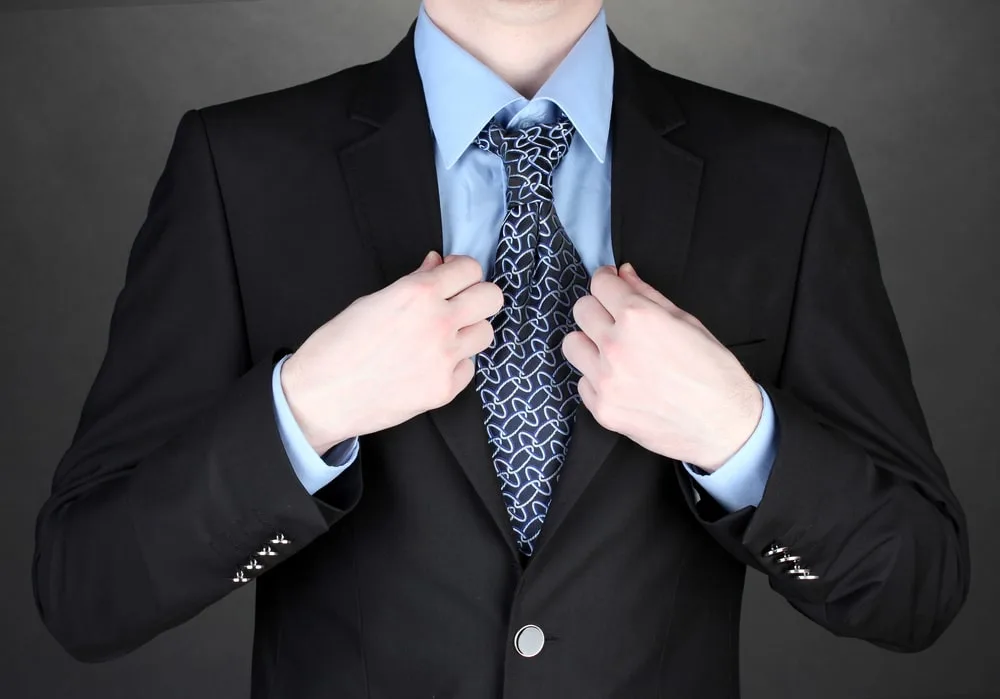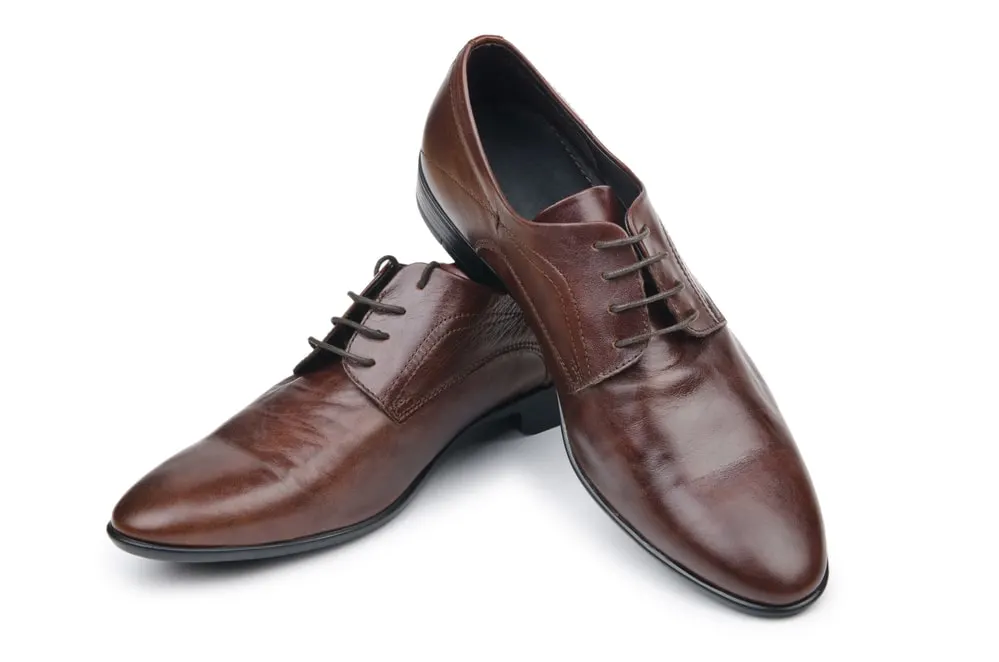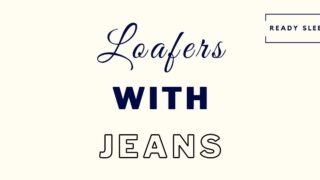Neutral suits are hard to go wrong with when it comes to color coordination, but black isn’t quite as versatile as grey or navy. So, can you wear a black suit with a blue shirt?
Yes, it’s definitely possible to wear a black suit with a blue shirt in both business-professional and smart-casual settings. Light blue shirts and formal-looking black worsted wool suits would be the best option in professional environments. In smart-casual settings, feel free to experiment with the shades and fabrics.
That’s the appetizer, but I’ve got a hunch you’re not full yet.
You’re about to read some crucial tips for getting this combination perfect no matter what you might be dressing for.
There are ways of making this combo stand out from a crowd and you’re about to learn the best of them.
Enjoy.
7 Tips For Wearing A Black Suit With A Blue Shirt
All of these tips are worth noting, but it’s pretty likely that one or two are going to be the most important and relevant for your specific circumstances.
Read them all, try them out, and see which ones make all the difference.

Ensure It’s Appropriate For The Dress Code
A black suit and blue shirt combination should only be worn in business-professional and smart-casual settings. It shouldn’t be worn in truly formal or business-casual ones.
Surprising? It might be, so let’s discuss.
Business-professional settings include corporate workplaces or other office settings where a suit and tie are required. A black suit and blue shirt would usually be fine.
Smart-casual settings are occasions where a casual black suit wouldn’t be considered overdressing and a vivid blue shirt would be absolutely fine.
But in a truly “formal” setting, a blue shirt would draw some awkward, disapproving stares. Stick to white dress shirts instead.
At a “business-casual” event, a suit of any sort wouldn’t be appropriate. I like to stick to the “no suits, no jeans, no ties” rule.
Stick to chinos/dress pants/OCBDs/blazers/sport coats.
Reserving the black suit and blue shirt combination for business-professional and smart-casual settings will save you a lot of grief.
Of course, the type of blue shirt and the type of black suit you choose should be guided by which of these settings you’re dressing for.
We’ll be talking more about this fact in the next few tips.
Consider The Shade Of The Blue Shirt
When wearing a black suit, light blue shirts will generally look dressier and more formal, while dark blue shirts will look more casual.
Out of the two suitable dress codes, business-professional would be the dressy one, while smart-casual would obviously be the casual one.
In business-professional settings, you’d usually be much better off going for a black suit with a light blue shirt as opposed to a darker one.

Light blue shirts have a professional look and feel. They’re considered one of the few appropriate alternatives to the white dress shirt in (most) professional workplaces.
Wearing a medium or dark blue shirt in these settings usually wouldn’t go down too well.
On the other hand, smart-casual settings give you much more room for experimentation regarding shirt color.

You could go for a medium or dark blue shirt with your black suit if you wanted to and it would usually be absolutely fine.
In fact, a dark suit with a dark shirt can look very sleek and elegant in the right settings.
Here’s a table summarizing all of this, giving you examples of popular shades of blue and the most appropriate dress code(s) when wearing a black suit:
| Light Blue Shirt And Black Suit | Business-Professional Or Smart-Casual |
| Sky Blue Shirt And Black Suit | Business-Professional Or Smart-Casual |
| Baby Blue Shirt And Black Suit | Business-Professional Or Smart-Casual |
| Powder Blue Shirt And Black Suit | Business-Professional Or Smart-Casual |
| Royal Blue Shirt And Black Suit | Smart-Casual |
| Navy Blue Shirt And Black Suit | Smart-Casual |
Consider The Style Of The Black Suit
A black suit and blue shirt combination can look very different depending on the specific features of the black suit.
A black suit can look very formal or very casual and everything in between.
It all depends on the features.
Here are the features you might find in a “formal” looking black suit:
- Smooth, wrinkle-resistant texture
- More structure, with padded shoulders
- No patterns
- Tapered fit
Here are the features you’re more likely to find in a “casual” black suit:
- A more rough, rugged, or wrinkled texture
- Less structure, with more relaxed shoulders
- A more relaxed fit
- May be patterned
When wearing a blue shirt in a business-professional setting, it would usually be more appropriate to go for a more formal-looking black suit.
In a smart-casual setting, a more casual-looking black suit would be a better idea.
The Fabrics Are Important
When wearing a blue shirt and a black suit in a business-professional setting, smoother and more wrinkle-resistant fabrics are more appropriate.
With the black suit, think worsted wool or even sharkskin. With the blue shirt, think high thread count cotton shirts in a poplin or twill weave, for example.
In smart-casual settings, more rugged and wrinkled fabrics/weaves are more appropriate.
Examples for the black suit include tweed, herringbone, and flannel. For the blue shirt, consider Oxford cloth (i.e OCBDs), linen, and chambray.

Consider the setting and the dress code and try to pick the right fabrics for each item.
Choose The Right Tie Color
A blue shirt and black suit combination can be worn with a variety of different tie colors. Neutral options include black and dark grey. If you’d prefer a more colorful tie, consider a dark shade of red (eg. burgundy or maroon) or even a mustard yellow in more casual environments.
However, in smart-casual settings, strongly consider whether a tie is necessary in the first place.
A black suit and blue shirt combo can look great without a tie as it really embraces the casual aesthetic.
Wearing a tie where it’s not necessary is a common reason for overdressing and is something to be avoided whenever possible.
If you do feel you need to wear a tie in a smart-casual setting, a more vibrant color such as the ones mentioned above would be reasonable.
But do try to keep things dark and muted to keep things looking sophisticated.
For example, instead of mint green, go for forest, olive, or sage green. Mint green wouldn’t look terrible, but given how vivid it is, it generally won’t look as elegant as these darker shades.
Black Or Brown Dress Shoes
Black and brown dress shoes both look great when wearing a black suit with a blue shirt. In business-professional settings, black or dark brown shoes would be the better option. In smart-casual environments, shoes in lighter shades of brown (eg. tan) add a nice touch of contrast.
Ignore those who say black shouldn’t be paired with brown – it’s outdated and quickly becoming irrelevant.
Black suits look great with brown shoes.

The lighter the shade of the brown shoes, the contrast produced with the black suit and the more casual the combination will generally look.
This is why black or dark brown dress shoes (eg. Oxfords, Derbys, or monk straps) would be the best option in professional settings.
In more casual settings, you could go for colors other than black or brown if you wanted to, but keeping things traditional would usually be best for those not looking to make a statement.

Alternatives include oxblood or burgundy.
If you want shoes that really catch the eye, consider a pair of navy suede Derby shoes such as these:

They’ll coordinate well with the blue shirt but, as you can see, look a whole lot more casual than the other options.
Round Things Off With A Pocket Square
A simple pocket square can elevate any black suit and blue shirt combo, but would usually be considered too flamboyant for the workplace.
So, the only setting where this combo could reasonably be worn with a pocket square is a smart-casual one.
Consider a neutral-colored pocket square (eg. white or grey) in a simple straight or puff fold if you’d prefer to keep things simple.
If you’d prefer to add some color and zest, consider a pocket square in a more vibrant color but try to coordinate it with the tie (if you’re wearing one) or your blue shirt.
That doesn’t mean matching the two items exactly. In fact, this is generally considered a no-no in men’s style.
Let’s assume you’re coordinating the pocket square with the blue shirt and not wearing a tie.
Consider wearing your black suit with a blue shirt and a pocket square in a different shade of blue.
Alternatively, consider a pocket square in a similarly “cool” color such as green or purple.
Frequently Asked Questions
Here are the answers to a couple of FAQs on the topic to really finish up in style.
Can You Wear A Black Suit With A Blue Shirt To A Wedding?
A black suit and blue shirt shouldn’t be worn to a wedding as it would usually be considered underdressing for the occasion.
In addition, the black suit is often avoided on celebratory occasions such as weddings.
A navy or grey suit would be a much better option.
While a light blue shirt wouldn’t be a terrible choice at a wedding, a white shirt would be the more traditional and preferable choice.
To sum that up, go for a navy or grey suit with a white dress shirt and you’re unlikely to set a foot wrong at any wedding.
Can You Wear A Black Suit With A Blue Shirt To A Funeral?
A black suit can be worn with a light blue shirt to most modern Western funerals, but a white shirt would usually be a better option.
Ultimately, it’s hard to go wrong with a black suit at a funeral. It’s generally considered the most appropriate and traditional choice.
A light blue shirt would be reasonable, but a white shirt would generally be a better option.
Ready Sleek founder. Obsessed with casual style and the minimalist approach to building a highly functional wardrobe. Also a fan of classic, vintage hairstyles.







